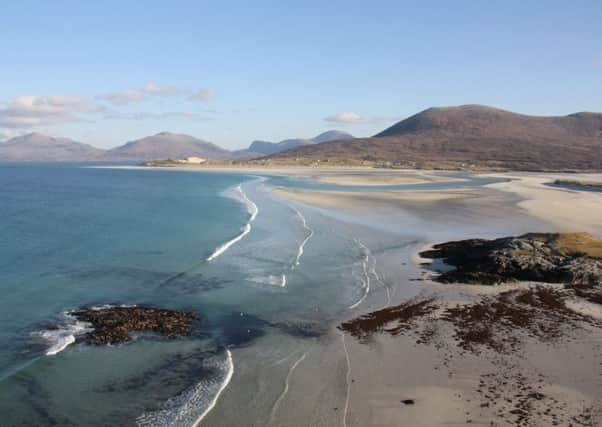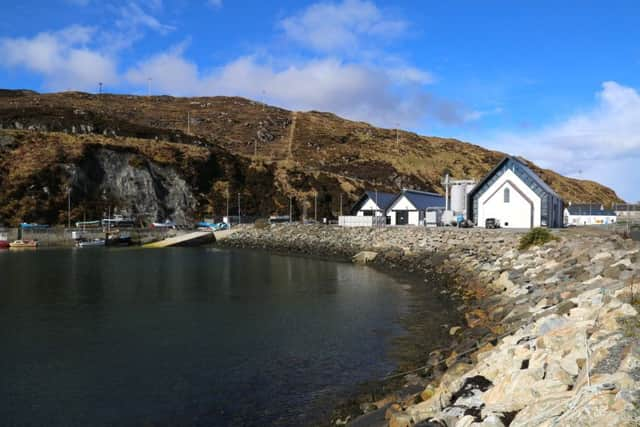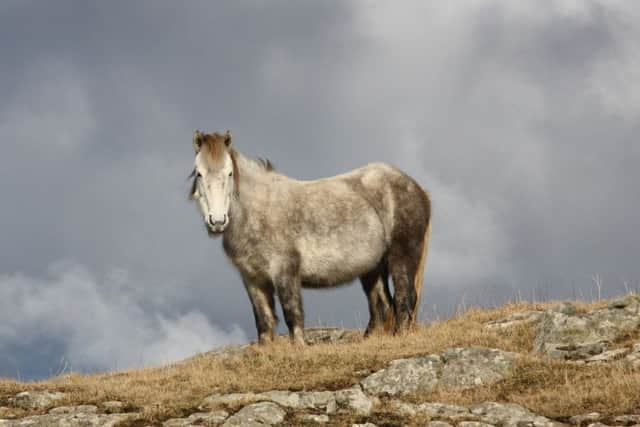Travel: Island hopping on the Outer Hebrides


There aren’t enough superlatives in the English language to describe the colours of Innse Gall, the “islands of strangers”, or Outer Hebrides.
It’s not a new phenomenon. Becoming this hopelessly inarticulate seems to be a commonplace affliction for travellers setting foot for the first time on Scotland’s westerly island chain.
Advertisement
Hide AdAnd so it is for us, after crossing the Little Minch from the northern tip of Skye to Harris aboard the first CalMac ferry of our island hopping road trip. The symptoms present themselves on deck as we’re offered a tantalising glimpse of the undulating landscape of our first island; wine, russet and ochre in the dying light of the day.


Woven into the age-old tapestry of Hebridean life, the colour palette of the island has served as a muse to generations of cottage weavers, and is discernible in the threads of their prized Harris tweed; from the green and straw-yellow hues of the machair in winter to the purple and grey tones of heather-clad mountain sides in summer.
Our formal artistic education begins in earnest early the next morning as we stroll on one of the archipelago’s best loved – and photographed – beaches at Luskentyre.
• READ MORE: Travel: Uluru and Alice Springs, Australia
The iridescent sand melts like butter beneath our feet as we leave the day’s first tentative footprints on the strand, the roar of viridian Atlantic waves crashing beside us as the breeze cuts through swaying blades of golden marram grass.


Few people besides Robinson Crusoe (and Tom Hanks, perhaps) would be able to relate to the feeling of being cast ashore and having such an expansive, unblemished corner of paradise to yourself.
It’s an image that is conjured on the many deserted beaches my own Man Friday and I pass by as we drive south from Tarbert to Blue Reef Cottages, our home on Harris. These luxury self-catering cottages – dubbed “Hobbit houses” and designed to blend seamlessly into the hillside – overlook another contender for Harris’s most spectacular beach, Scarista.
Advertisement
Hide AdLike our hosts, most of those fortunate to live on the islands are no more than a mile from the coast.
Indeed, as our first day closes, we sit beside a flickering peat fire while through the panoramic windows of the cottage we can watch brooding rain clouds obscure the horizon as they roll in from the Atlantic and over Harris’s northern peaks.
Advertisement
Hide AdThe islands, fanned out like the bones of a fish along Scotland’s northwest coast, all have their own identities and idiosyncrasies, not to mention vastly different typographies. No two are quite the same, we discover, as we drive north to circumnavigate the conjoined twins of Harris and Lewis.
As the most populated area in the Outer Hebrides, Lewis continues to bear witness to millennia of habitation on the isles stretching back at least 5,000 years to the construction of the enigmatic Calanais Standing Stones.
A short drive from the stone circle brings us to the blackhouse village at Na Gearrannan, giving us a glimpse into the centuries-old crofting life. With thatched roofs and drystone walls, these traditional houses (now holiday lets) were lived in until the 1970s before being abandoned for housing requiring less maintenance. Set in a small cove, the village embodies the time-old marriage of working both the land and the sea.
The sea and its bounty is, of course, a means of survival for communities on far flung islands such as these, something that is very much evident on a visit to the Isle of Harris distillery on our drive back to base.
Using sugar kelp hand-harvested on the islands in the distillation of its batch gin, the distillery – which is open to visitors and boasts a great café – perpetuates a traditional Hebridean practice of gathering seaweed. Opened in 2015, the small distillery in Tarbert also embodies the admirable ethos of creating something lasting on Harris for future generations.
• READ MORE: Travel: Reflections on vice and virtue in Amsterdam
Advertisement
Hide AdOur attention next turns south to the Uists, which require another ferry to reach them. We catch the early morning CalMac crossing from Leverburgh on Harris’s southernmost tip, which then meanders up and down the shallows of the Sound of Harris towards Berneray. It’s difficult to imagine a more beautiful journey, taking an hour end to end as the ferry slowly slaloms in and around rocky islets.
Rolling down the ship’s ramp on Berneray, we’re instantly aware we’re in a different environment altogether. Flatter, with rolling moorland and an occasional hill, we’re soon cruising across North Uist, Benbecula, South Uist and Eriskay in turn, all now connected by a series of causeways and sheep-strewn single-track roads.
Advertisement
Hide AdSpeckled with freshwater lochans enriched with wild trout, and sea lochs and bogs, these waterlogged islands are teeming with flora and fauna; from otters and wild Eriskay ponies to greylag geese and wading birds.
On South Uist, in particular, you can best appreciate the wild flowers of the machair in summer, with its expansive carpet stretching from the roadside to its white shell beaches for 20 miles along the west coast.
Our trip culminates in a night at the southern tip of South Uist, gazing across the waters to the tail-end of the Outer Hebrides.
Unfortunately, time does not permit us to reach Barra, the last inhabited island of the chain and considered to be the real gem in the Hebridean crown. Just five miles across and eight miles long, the flat green island is a haven for cycling and sea kayaking.
Our island hopping adventure – which has been a long time in the making – has only whetted our appetite, ensuring we part company with Innse Gall as firm friends, intent on a return visit, rather than complete strangers.
FACT FILE
• A two-night stay off season at Blue Reef Cottages (stay-hebrides.com) on the Isle of Harris costs £540. The 5-star luxury self-catering cottages overlook the beautiful beach at Scarista. Along with a well-appointed modern kitchen and underfloor heating, each cottage has a sauna and jacuzzi.
Advertisement
Hide Ad• CalMac (calmac.co.uk) offers a variety of Hopscotch tickets to make the most of your island hopping experience. David travelled on a winter Hopscotch 14 ticket around Harris and the Uists, priced at £104 for a car and two passengers.
• For more information on things to see and do in the Outer Hebrides, visit visitscotland.com